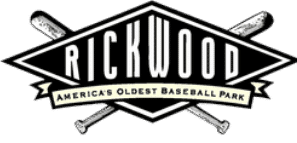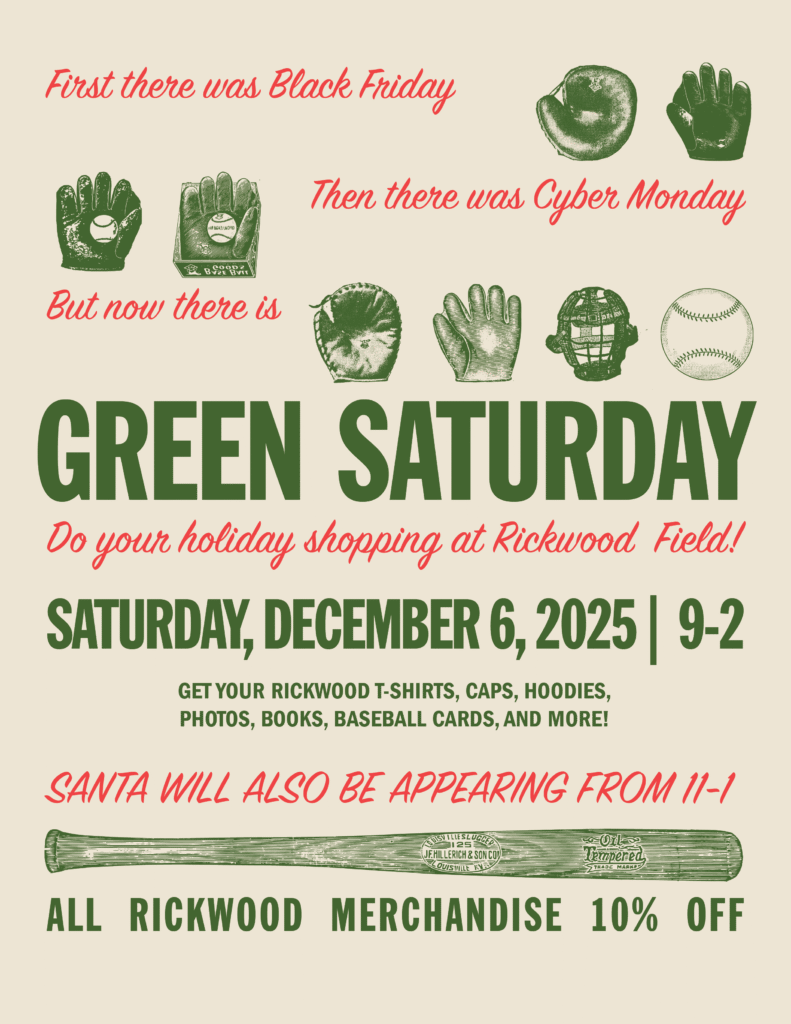See the notice for upcoming dates that Rickwood Field will be closed.
1920 – 1929
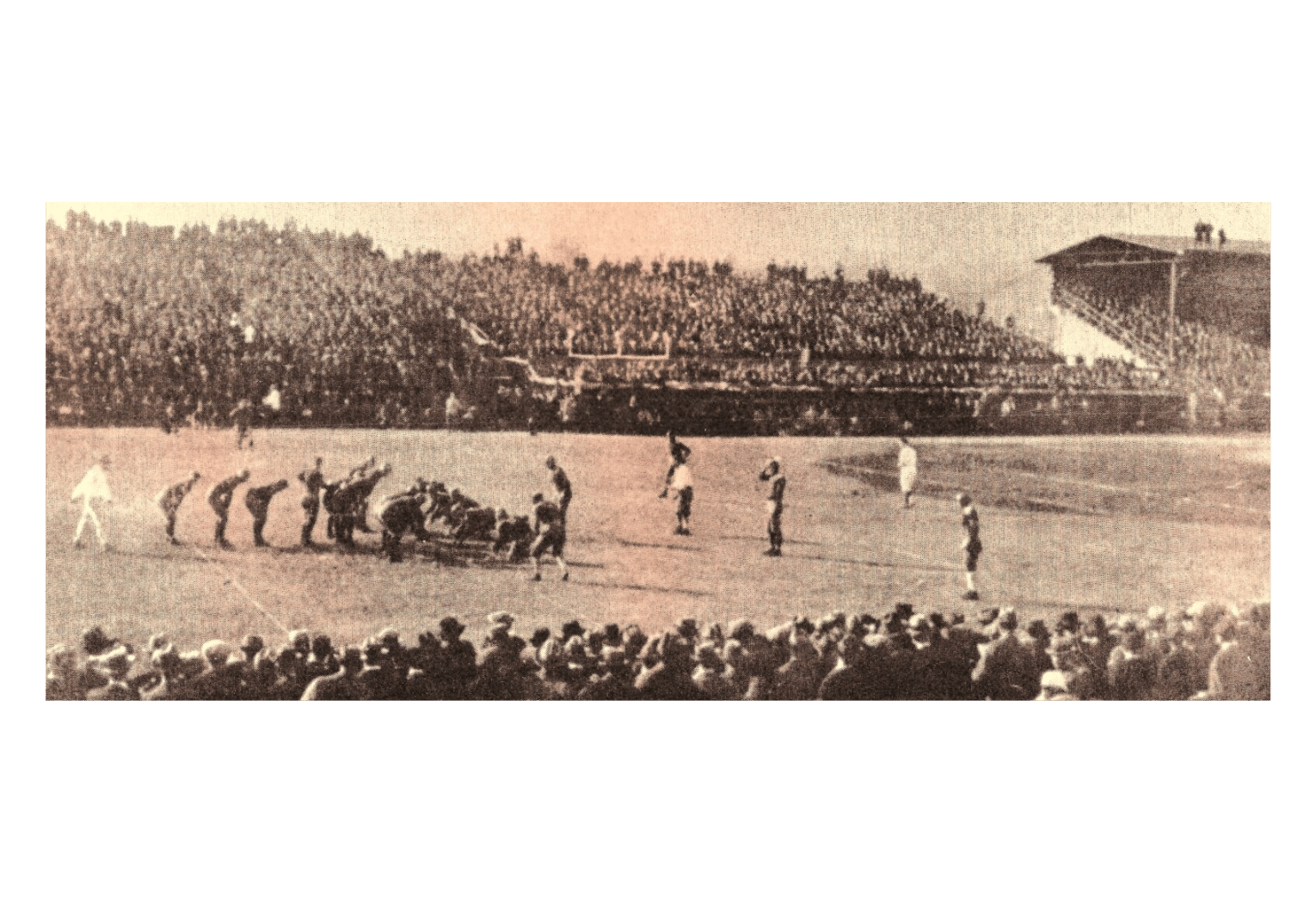
1922
Rickwood was Birmingham’s premier sporting venue, and Woodward expanded the business by playing host to college and high school football. Auburn, Alabama, Birmingham Southern and Howard (now Samford) played before enthusiastic crowds (and tore up the field) until the City built Legion Field (in 1927).
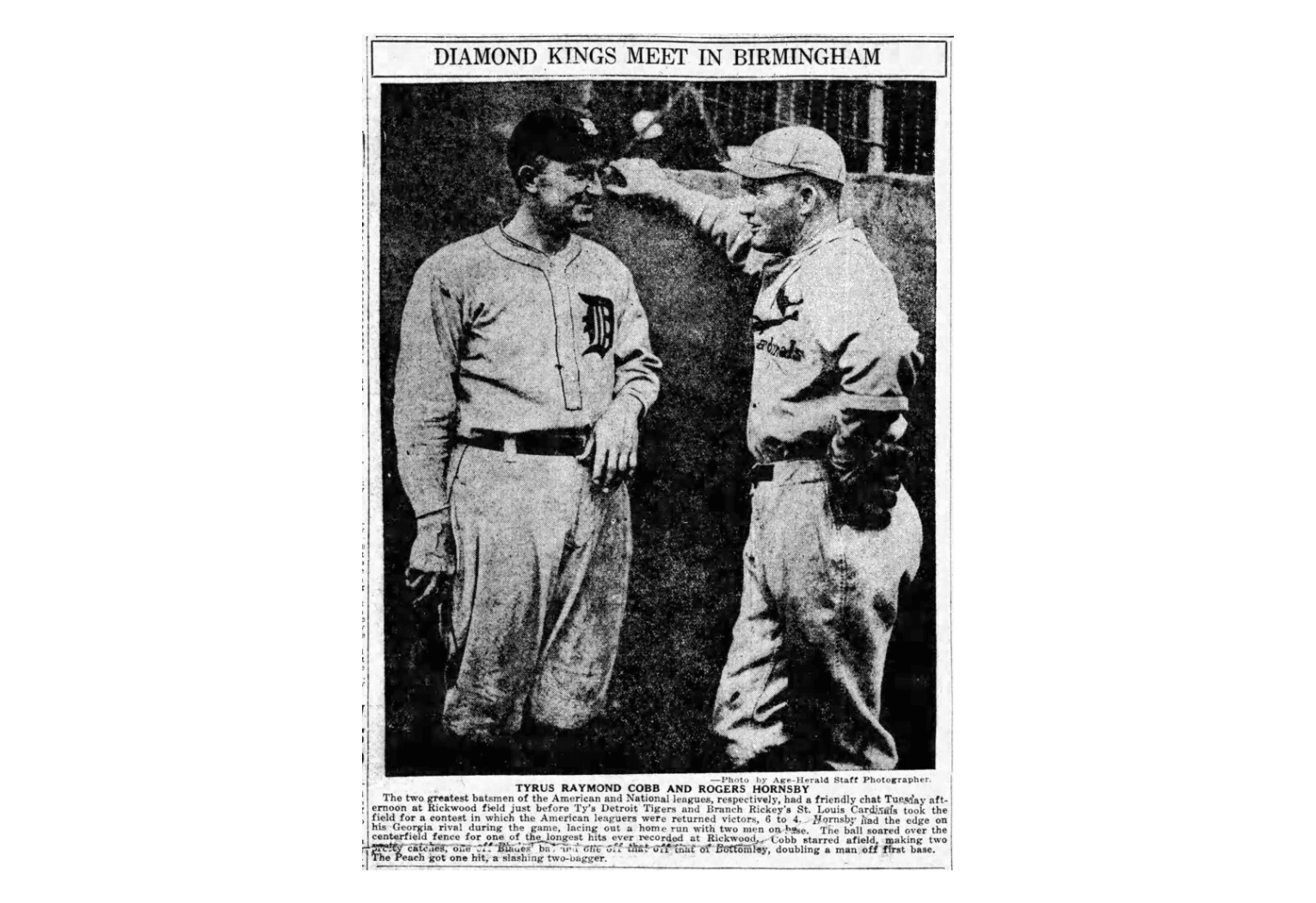
1923
Thanks to the reputation of Birmingham’s sparkling diamond and enthusiastic crowds, barnstorming teams frequently stopped at Rickwood. Future Hall of Famers Ty Cobb and Rogers Hornsby were among the early baseball heroes to thrill Birmingham crowds.

1928
Woodward had little choice but to expand his beloved ballpark to accommodate the overflow crowds. The architectural renderings show the plan to extend the covered grandstand and wrap it around the right field foul pole, and built separate ‘colored bleachers.’

1928
Inspired by popular designs that he also featured in his mansion on top of Red Mountain, Woodward constructed a new entranceway building in a mission stucco style, and added ticket booths and offices.
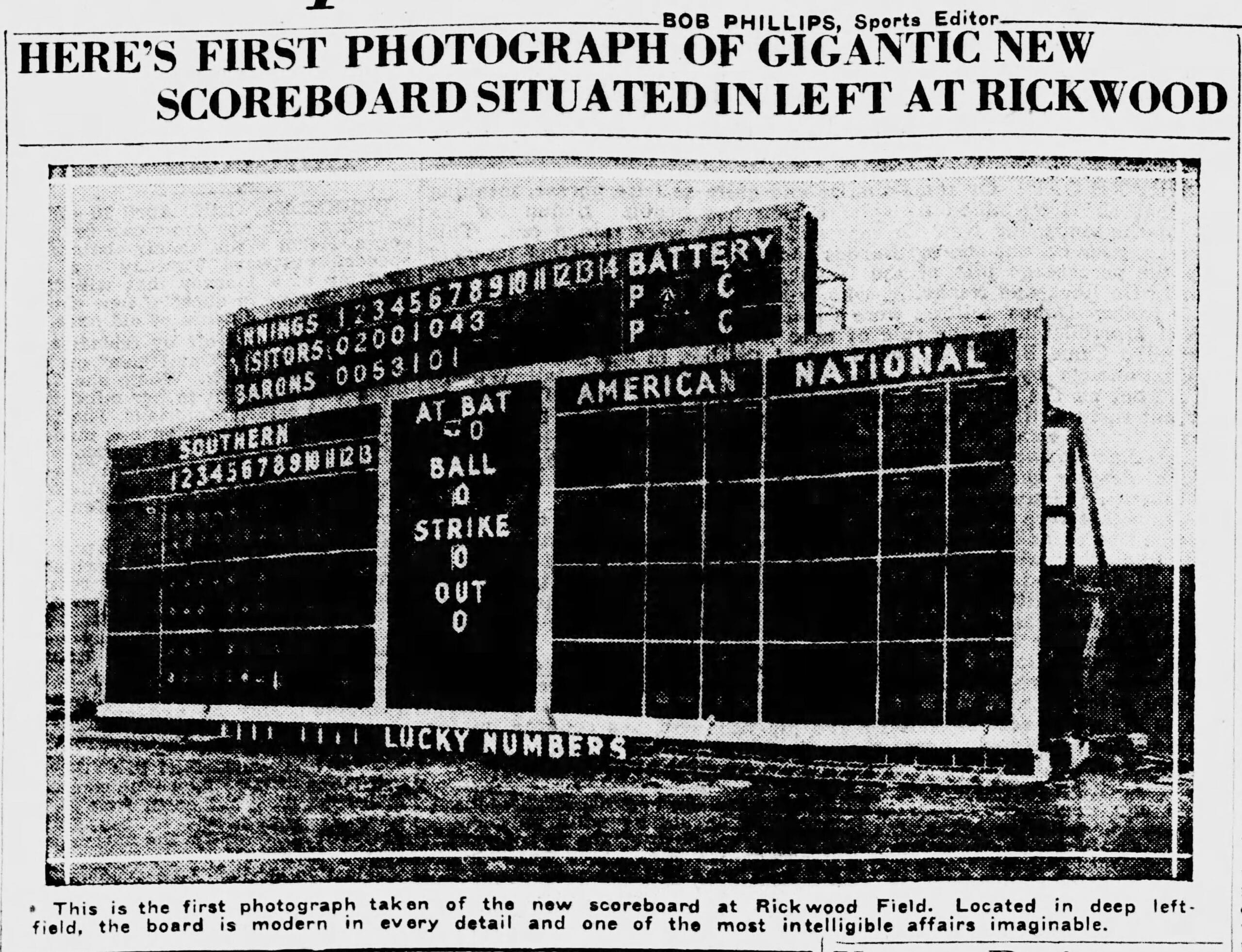
1928
The other significant change to Rickwood was the construction of a new scoreboard in a new location, deep against the left field fence.
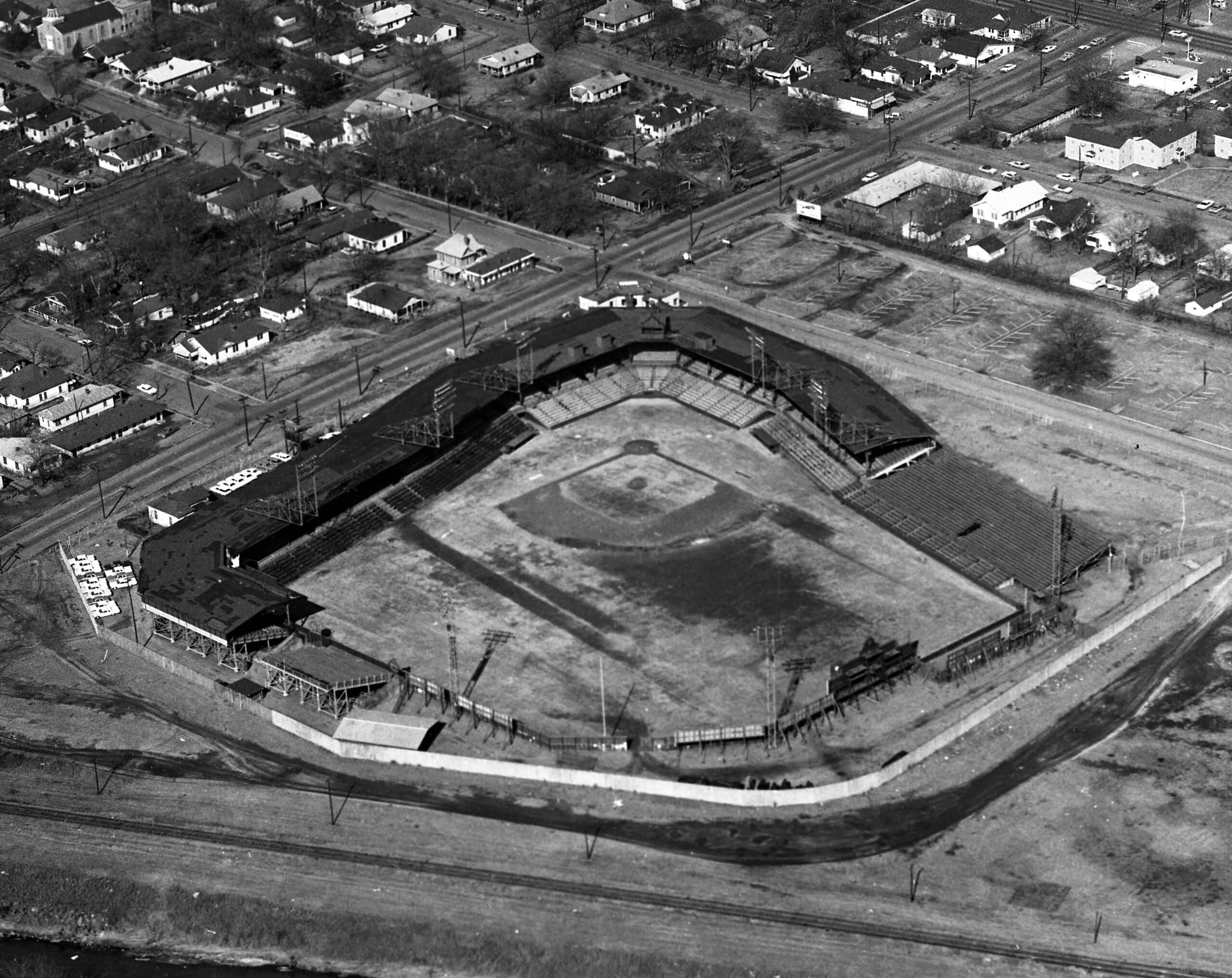
1928
aerial view of Rickwood shows the ballpark configuration by decade end. New covered stands, segregated bleachers, new entrance building and scoreboard, with additional bleachers added in the outfield for the constant overflow crowds. Fans parked wherever they could, as far as the eye can see.
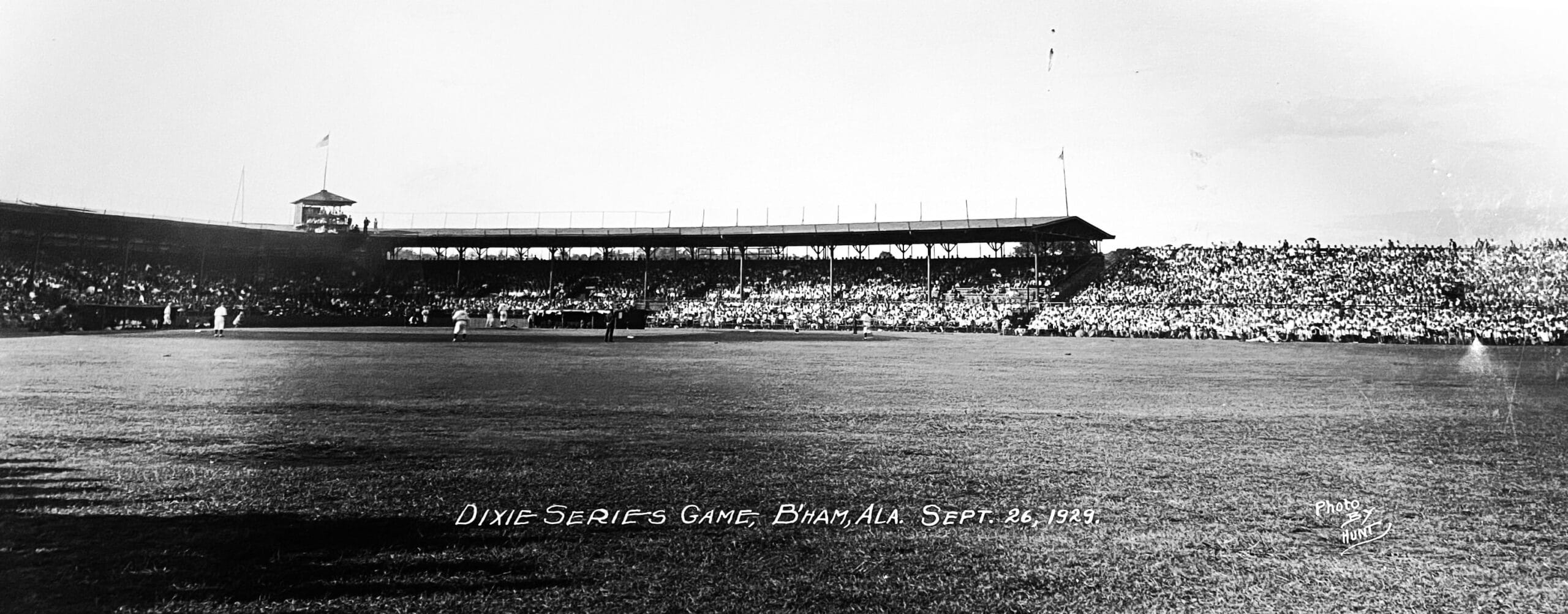
1929
Before ‘major’ league baseball came to the South, the annual Dixie Series between the champions of the Southern Association and Texas League was the penultimate professional baseball event.
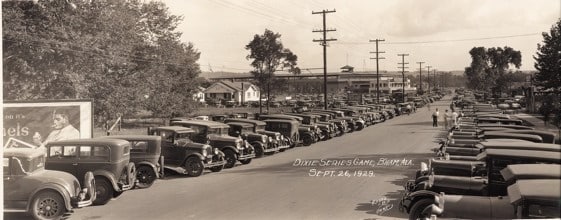
1929
1929 The trolley cars still ran frequent loops from downtown, but the boom of the automobile turned Rickwood’s 12th Street into a parking lot.
